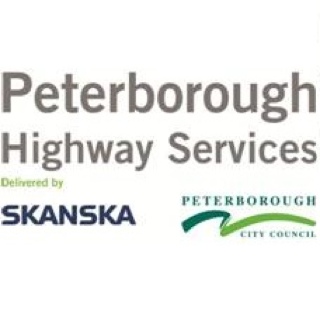Information
-
Workshop Site Inspection
-
Document No.
-
Client / Site
-
Conducted on
-
Prepared by
-
Location
-
Personnel
1 Safety Administration
-
Policy. Are copies of the University Health and Safety Policy readily accessible to staff and students?
-
Evaluation. Is there evidence of previously conducted safety surveys or regular safety checks?<br>
-
Follow up. Have all actions from previous inspections and audits been completed?
-
Hazards and Risk. Where required, is access to work areas restricted to authorised people only?
-
Hazards and Risk. Have approved risk assessments been carried out within the last three years <br>
-
Hazards and Risk. Are copies of the current risk assessments and relevant safety documentation readily accessible
-
Hazards and Risk. Is everyone working or studying in the area familiar with those risk assessments, especially in the case of work involving hazardous substances, working at height, machinery and plant, confined spaces, and other potentially high risk activities?
-
Information. Is induction, awareness training and supervision being provided?
-
Information. Are staff and students informed of any required safe methods of work?
-
Information. Are procedures in place for the safe management of authorised visitors?
-
Information. Are procedures in place for the safe management of faculty commissioned contractors?
-
Supervision. Are Workplace Supervisors aware of their responsibilities as per the University Safety and Health Policy?
-
Supervision. Are procedures in place to safeguard lone workers and/or people conducting work outside of normal working hours?
-
Supervision. Are procedures in place to control apparatus and/or experiments running overnight and/or at weekends?
-
Supervision. Are Workplace Supervisors aware of their responsibilities as per the University Safety and Health Policy?
-
Incident Reporting. Are procedures in place for reporting incidents such as accidents, near misses, spills of hazardous substances and instances of occupational ill health?
-
Incident Reporting. Is there evidence of the reporting of incidents such as accidents, near misses, spills of hazardous substances and instances of occupational ill health (Vault records or an accident register)?
-
Incident Reporting. Is there evidence that incidents have been properly investigated and that arising recommendations have been implemented?
-
Emergency Planning. Is there an emergency response plan that caters for likely emergencies such as fire, earthquakes and bomb threats, and specific laboratory emergencies such as spills and exposure to hazardous materials?
-
Emergency Planning. Is the location of all hazardous substance storage areas clearly marked on the emergency response plan?
-
Legal Requirements. Where necessary, has occupational health monitoring of staff and students been implemented via the University’s referral process?
2 High Profile Signage
-
Is a hazardous substance summary and mandatory hazard pictograms displayed on the exterior of workplace access doors?
-
Is emergency instruction signage in place?
-
Are fire exits clearly identified?
-
Are evacuation instructions clearly displayed?
-
Are emergency contact numbers clearly displayed?
-
Are the locations of fire extinguishers, first aid kits, eye wash stations, and spill kits clearly identified?
3 Fire Safety
-
Are fire exits able to be opened without keys or combinations?
-
Are all smoke and fire doors kept closed when not in use? (except doors on magnetic catches linked to the fire alarm system)
-
Are potential ignition sources eliminated or minimised?
-
Do staff and students know what to do in the event of a fire?
-
Have personal evacuation plans been developed for any person with disabilities who are regularly in the area (staff or students)?
-
Is fire fighting equipment readily available, and is the fire fighting equipment suitable for use with the likely types of fire (CO2 extinguishers for energised fires, foam for flammable liquids etc.)?
-
Are people working in this area familiar with the location of fire fighting equipment and do they know how to use it?
-
Have Building and Floor Wardens been appointed to cover this area?
-
Are monthly fire checks being carried out by wardens?
-
Is a biannual (semester) fire drill carried out and recorded?
4 First Aid
-
Are there sufficient trained first aiders (1/20 staff) available or on call?
-
Are any unusual first aid considerations catered for? (such as neutralising of hazardous substances, requirements for supplementary oxygen, etc.)
-
Are first aid kits (appropriate for the work area) readily available?
-
Are first aid kits checked monthly to ensure that they are kept well stocked, with contents in good condition?
5 Hygiene Control
-
Are there adequate washing facilities, with soap and towels/dryers?
-
Are there facilities available near this area where people can eat and/or drink, and do these facilities include an adequate supply of wholesome water for drinking or filling kettles etc?
-
Is eating, drinking, smoking and applying cosmetics banned in the workshop?
-
Can personal outdoor/street clothing be stored in such a way that there is no risk of contamination?
6 Lighting
-
Are lighting levels sufficient for the tasks being performed?
-
Is glare from both external and internal sources adequately controlled?
-
Are light fittings, diffusers and tubes/bulbs clean and in good condition?
7 Ventilation/Thermal comfort
-
Is general ventilation within the workplace adequate?
-
Are ambient temperatures in the workplace suitable for the work being carried out?
8 Noise
-
Is excessive noise in the workplace prevented?
-
Are noise controls adequate?
-
Are photocopiers located away from personal workstations?
9 General Workshop Area
-
Are the interior surfaces, structures and equipment suitable for the work being undertaken?
-
Are worktops intact and easily cleaned?
-
Are floor coverings intact and non-slip?
-
Are floors clean?
-
Are all working areas clear of obstructions, clutter, and tripping/slipping hazards e.g. cables, stock, rubbish, junk, etc.?
-
Are general rubbish receptacles free from hazardous or dangerous wastes?
-
Is all other hazardous waste disposed of in accordance with the University standard?
-
Are all waste containers emptied regularly?
10 Equipment
-
Have all staff using machinery and plant received suitable instruction, training, and where necessary, certification?
-
Are all large items of machinery and plant suitably placed to avoid overcrowding and anchored to ensure stability?
-
Where applicable, are machines fitted with adequate and compliant guards?
-
Where applicable, are machine guards correctly adjusted?
-
Has all fixed wire electrical equipment been electrically tested and labelled with the date of test?
-
Are safe lock out and/or isolation systems established where required?
-
Are hand tools serviceable and properly maintained?
-
Are all ladders rated for industrial use and suitable for the tasks to be undertaken? (Compliant with AS/NZS 1892 and rated greater than 120kg)
-
Are all ladders and access equipment serviceable?
-
Are users trained in the safe use of ladders?
-
Is all lifting tackle stored in such a way to prevent damage?
-
Is lifting tackle examined for damage prior to and after each use, and inspected every 12 months?
-
Is all lifting tackle suitable for use and correctly maintained and inspected?
-
Is all lifting tackle suitable for use and correctly maintained and inspected?
-
Is the Safe Working Load (SWL) clearly marked on each piece of lifting tackle?
-
Are vibration hazards adequately controlled?
-
Are hot work(welding, brazing, gas cutting) hazards adequately controlled? (Welding screens, welding goggles, fire fighting equipment)
-
Are other specialist hazards within the workshop adequately controlled? (Including, but not limited to: work at height, confined spaces, restricted lasers, forklifts, cranes.)
-
Are compressed air hazards adequately controlled?
11 Local Exhaust Ventilation
-
Where applicable, are suitable Local Exhaust Ventilation (LEV) systems available to remove hazardous or nuisance substances or materials?
-
Are those LEV systems regularly maintained?
12 Handling & storage of materials
-
Are cabinets and shelving uncluttered and securely fixed in place?
-
Are heavy items stored on/in low shelves or cupboards?
-
Are spill trays regularly inspected and emptied and cleaned as needed?
-
Are bagged dry powders stored in a hard container or tray?
-
Are bagged dry powders stored in a hard container or tray?
-
Are bottles and other containers stored where they cannot be knocked or kicked over?
13 Hazardous Substances Management
-
Are hazardous substances within the workplace managed by a competent person?
-
Is there an inventory of hazardous substances that are stored in the workshop and associated bunkers?
-
Are all hazardous substances clearly labelled with the substances common name and associated hazards as a minimum?
-
Are full safety data sheets for each substance readily available? (These may be in electronic form so long as they can be accessed without an intranet/internet connection and external power)
-
Are mini safety data sheets for each substance printed out and held in a readily accessible folder at the point of storage?
-
Are containers of hazardous substances stacked or stored in such a way that they will not spill their contents?
-
Are incompatible substances stored separately?<br>(this includes acids/alkalis; cyanides/acid; sulphides/acids: flammables/oxidisers; reducing agents/oxidisers and; water reactive/aqueous)<br>
-
Are bottles containing strong acids, strong alkalis, flammable liquids or other high hazard chemicals kept on spill trays when not in storage?
-
Are very toxic and other high hazard chemicals kept in locked fire resistant cupboards or cabinets?
-
Are corrosives kept in a non-metallic cupboard or cabinet?
-
Are eyewash facilities located near where corrosives are being used?
-
Are all pressurised gas cylinders secured by restraining chains, bench clamps or similar?
-
Are gas cylinders sited away from doors, escape routes or hazardous substance storage areas?
-
Are there properly designed gas cylinder trolleys to transport heavy gas cylinders?
-
Are there systems in place to dispose of chemicals or substances that have expired?
-
Are there clear systems in place to prevent inappropriate disposal of chemicals, oils or solvents down drains (e.g. signage over sinks and clear disposal procedures)
14 Spills and Leaks
-
Is there an approved spill/leak emergency response plan? (This plan may include the requirement to seal rooms to prevent gas escape and/or closing off drains to prevent the escape of liquids)
-
Are there people with experience and knowledge, designated to deal with spills/leaks involving very hazardous substances?
-
Do people know what to do in the event of a spill or leak?
-
Are appropriate spill kits and personal protective equipment readily available to deal with spills/leaks of hazardous substances?
-
Are spill kits checked regularly to ensure that they are kept well stocked, with contents in good condition?
-
Is there evidence that the spill/leak emergency response plan has been practised in the last year?
-
Where required, is there a suitable and accessible eye wash station/emergency shower installed?
-
Where plumbed eye wash stations and emergency showers are installed, are they functionally tested and flushed on a regular basis? (Monthly or as per manufacturers recommendations)
15 Personal Protective Equipment (PPE)
-
Does the PPE in use by staff and students match that specified in Workplace Risk Assessments and Safe Work Instructions?<br>(e.g. overalls, eye protection, gloves, respirators etc.)<br>
-
Are people using PPE trained in its safe use?<br>
-
Are people using PPE correctly?
-
If it is not "one shift" disposable, is the PPE regularly inspected, cleaned and maintained?
-
Is protective equipment stored where it cannot be contaminated by hazardous substances and where it will not contaminate outdoor clothing or equipment?
-
Are there suitable arrangements in place for the cleaning and /or decontaminating of protective clothing?
-
Is protective equipment stored where it cannot be contaminated by hazardous substances and where it will not contaminate outdoor clothing or equipment?
-
In the case of respiratory or hearing protection is it personal to an individual?
-
Is protective footwear in use fully enclosed, safety capped and chemically resistant (where required)?







